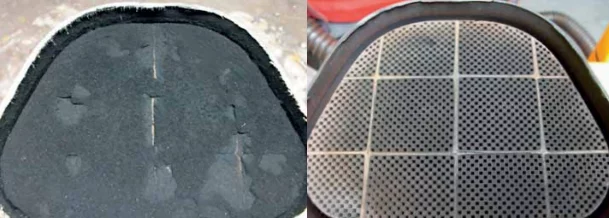
At first glance, it might seem like a straightforward device with no room for trouble. However, the reality is quite different. The Diesel Particulate Filter (DPF), commonly known as the DPF filter, has been a source of frustration for many drivers, especially in older used diesel vehicles. There are no foolproof tricks to ensure its endless lifespan, but with our advice, you can make it last significantly longer. Join us for an overview of the most common DPF filter problems and tips on how to prevent them.
What is a DPF Filter and How Does It Work? The Diesel Particulate Filter (DPF) is a device designed to eliminate particulate matter from the exhaust gases of internal combustion engines. Initially installed primarily in diesel engines, it became a mandatory component with the introduction of EURO 5 emission standards. However, as times have progressed, DPF filters are also found in gasoline engines (especially post EURO 6.2), which also emit fine particles that were largely ignored for a long time.
The DPF filter is an environmental boon, effectively preventing carcinogenic substances from entering the air when functioning properly. On the flip side, blockage or damage to the filter can become a significant headache for its owner.
Why Does the DPF Filter Get Blocked? Various factors can lead to DPF filter blockage for different vehicle types and engines. Excessive particle production by the engine, fuel and oil quality, driving style, and even the placement of the DPF within the exhaust system can contribute to complete blockage or regenerating issues.
In general, problems often arise during short city trips, where the regeneration process might not complete. The warning light may illuminate or a message may appear on the dashboard indicating a full DPF. If you continue driving without addressing the issue, soot will continue to accumulate in the filter until more warning lights appear and the vehicle enters a reduced power mode.
In this case, a visit to the service center will be necessary to perform forced DPF regeneration or manual cleaning. In the worst-case scenario, it might lead to DPF replacement, which can cost over 1000 EUR.
Preventing DPF Filter Problems To avoid these issues, ensure regular driving on highways to facilitate regeneration, use high-quality fuel and oil, and adopt a driving style that allows the engine to operate at optimal temperatures. Additionally, following the manufacturer’s recommended maintenance schedule will go a long way in ensuring your DPF filter’s longevity.
By understanding the potential problems and taking proactive measures, you can keep your DPF filter in good health and extend its lifespan, saving you from costly repairs and replacements.